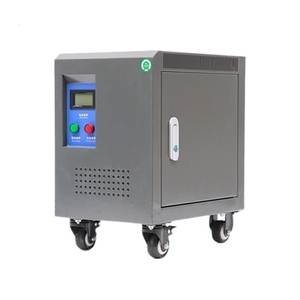Single-Phase Isolation Transformer for 10KV Distribution Network
1. How to choose the single-phase isolation transformer's capability?
1) Principle of selecting single-phase transformer capacity
Reducing the capacity of the equipment will help to alleviate the excessive line losses that currently exist in the 10kV distribution network when the power load is typical. The low-voltage distribution network's load can alter at any time, depending on the time of year, the season, etc. When developing a 10kV distribution network, a single three-mixed distribution transformer installation method is typically employed. This scheme can be customized with one or more single-phase distribution transformers. Determine the capacity demand of a single-phase isolation transformer based on the specific changes in electricity consumption load and the low-voltage grid's mode of operation, then select the transformer that is most appropriate for power delivery.
2) Establish the precise capacity
When selecting a single-phase isolation transformer's power supply range, it is important to keep in mind the fundamental idea of "small capacity, densely dispersed." A single-phase transformer's power supply range should not be excessively wide, aiming to minimize the power supply density. Additionally, because single-phase transformers only have two low-voltage windings and a 50% higher low-voltage rated current than three-phase transformers, they are typically installed using a single-pole approach, which greatly influences the single-phase transformer's capacity. For instance, the rated current on the low voltage side of an 80 kVA single-phase transformer is comparable to the rated current on the 125 kVA three-phase transformer's low voltage side. The total capacity of the single-phase isolation transformer installed through a single pole frame installation should not be greater than 100 kVA, whereas in the traditional distribution network design, the capacity of the frame type three-phase distribution transformer is typically not greater than 500 kVA, which is the result of a thorough consideration of various factors.
2. The installation method of choice
Single-phase isolation transformers are intended to offer users more reliable electrical energy products and lessen a number of issues resulting from heavy electrical loads. There are typically three ways to install single-phase transformers, and the best installation technique should be chosen depending on the circumstances.
The independent installation type is the first. Other low-voltage grids are not connected to the installation of the single-phase transformer, which operates independently. Particularly in some urban and rural locations as well as scattered village use, this sort of installation is in the single-phase transformer nearest to the load center.
The installation via a tap is the second. To provide a good, seamless conversion between the three-phase transformer power and the single-phase transformer power, the low-voltage branch line of the single-phase transformer in this installation needs to be detached from the main line and linked to a new power source.
The installation of a main line type comes in third. This method is mostly applicable to the end of the three-phase station without a three-phase load; the first will be removed from the main line, and the single-phase transformer to the end of the power supply to the main line, to achieve the conversion between the power supply.
3. The selection of wiring scheme
When wiring single-phase isolation transformers, there are two primary possibilities. The first is the manual lap approach, in which the high-voltage side and low-voltage side of the job are not the same and the high-voltage side of the single-phase transformer is operated with a drop fuse as the main controller. When the single-phase isolation transformer is turned on, the main line connection with the three-phase low-voltage power supply must be manually removed from the low-voltage side before the single-phase transformer may be latched. When the single-phase isolation transformer is turned off, the low-voltage side of the transformer must be removed, and then the main line of the three-phase low-voltage power supply must be reconnected. Another is the knife switch conversion method, which realizes the conversion of single-phase isolation transformer power and three-phase transformer power on the low-voltage side of the distribution network using a four-pole double-throw knife switch for control.

